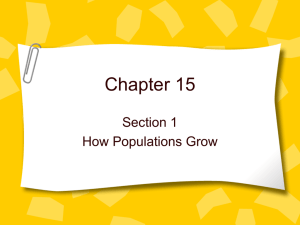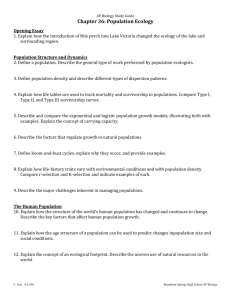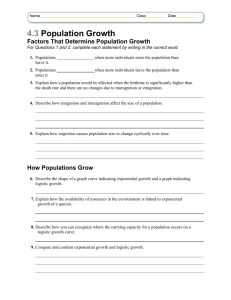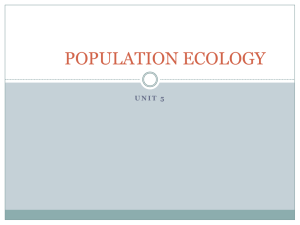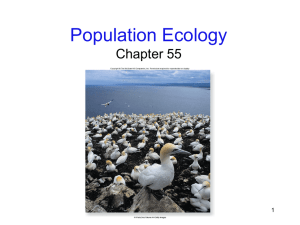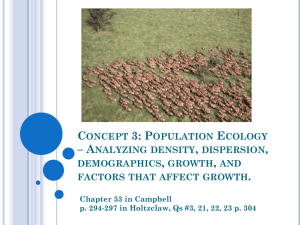Principles of Biology ______Lake Tahoe Community College
advertisement
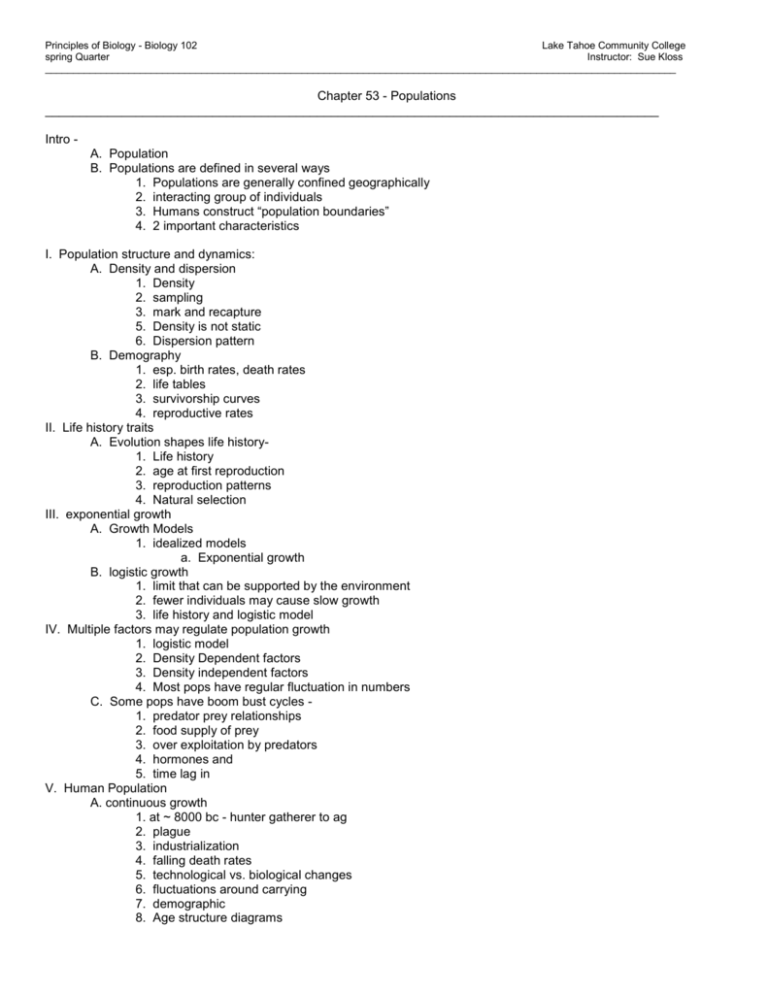
Principles of Biology - Biology 102 Lake Tahoe Community College spring Quarter Instructor: Sue Kloss _________________________________________________________________________________________________________________ Chapter 53 - Populations ________________________________________________________________________________________ Intro A. Population B. Populations are defined in several ways 1. Populations are generally confined geographically 2. interacting group of individuals 3. Humans construct “population boundaries” 4. 2 important characteristics I. Population structure and dynamics: A. Density and dispersion 1. Density 2. sampling 3. mark and recapture 5. Density is not static 6. Dispersion pattern B. Demography 1. esp. birth rates, death rates 2. life tables 3. survivorship curves 4. reproductive rates II. Life history traits A. Evolution shapes life history1. Life history 2. age at first reproduction 3. reproduction patterns 4. Natural selection III. exponential growth A. Growth Models 1. idealized models a. Exponential growth B. logistic growth 1. limit that can be supported by the environment 2. fewer individuals may cause slow growth 3. life history and logistic model IV. Multiple factors may regulate population growth 1. logistic model 2. Density Dependent factors 3. Density independent factors 4. Most pops have regular fluctuation in numbers C. Some pops have boom bust cycles 1. predator prey relationships 2. food supply of prey 3. over exploitation by predators 4. hormones and 5. time lag in V. Human Population A. continuous growth 1. at ~ 8000 bc - hunter gatherer to ag 2. plague 3. industrialization 4. falling death rates 5. technological vs. biological changes 6. fluctuations around carrying 7. demographic 8. Age structure diagrams B. Global Carrying Capacity 1. estimates of carrying capacity 2. 10-15 billion Ch 53 objectives 1. Distinguish between density and dispersion of a population. 2. Explain how ecologists may estimate the density of a species. 3. Describe conditions that may result in clumped dispersion, uniform dispersion, and random dispersion of individuals in a population. 4. Explain how a life table is constructed. 5. Distinguish between a life table and a reproductive table. 6. Describe the characteristics of populations that exhibit Type I, Type II, and Type III survivorship curves. 7. Define and distinguish between semelparity and iteroparity. Explain what factors may favor the evolution of each life history strategy. 8. Explain, with examples, how limited resources and trade-offs may affect life histories. 9. Compare the exponential model of population growth with the logistic model. 10. Explain how an environment’s carrying capacity affects the per capita rate of increase of a population. 11. Explain the meaning of each of the following terms in the logistic model of population growth: rN(K - N) K 12. Distinguish between r-selected populations and K-selected populations. 13. Explain how density-dependent factors affect population growth. 14. Explain, with examples, how biotic and abiotic factors may work together to control a population’s growth. 15. Describe boom-and-bust population cycles, explaining possible causes of lynx/hare fluctuations. 16. Describe the history of human population growth. 17. Define the demographic transition. 18. Compare the age structures of Italy, Afghanistan, and the United States. Describe the possible consequences for each country. 19. Describe the problems associated with estimating Earth’s carrying capacity for the human species.




